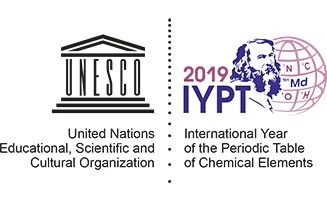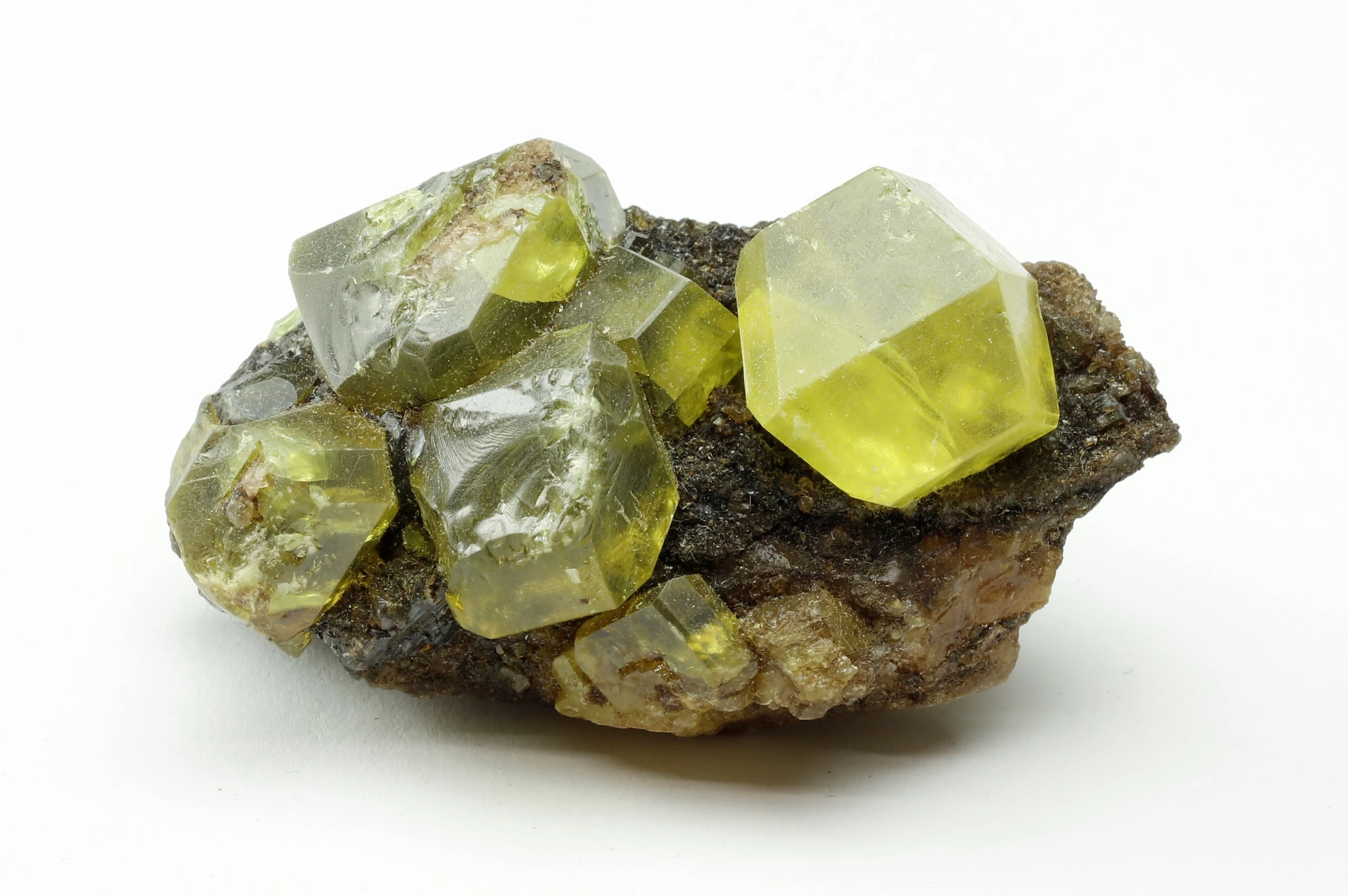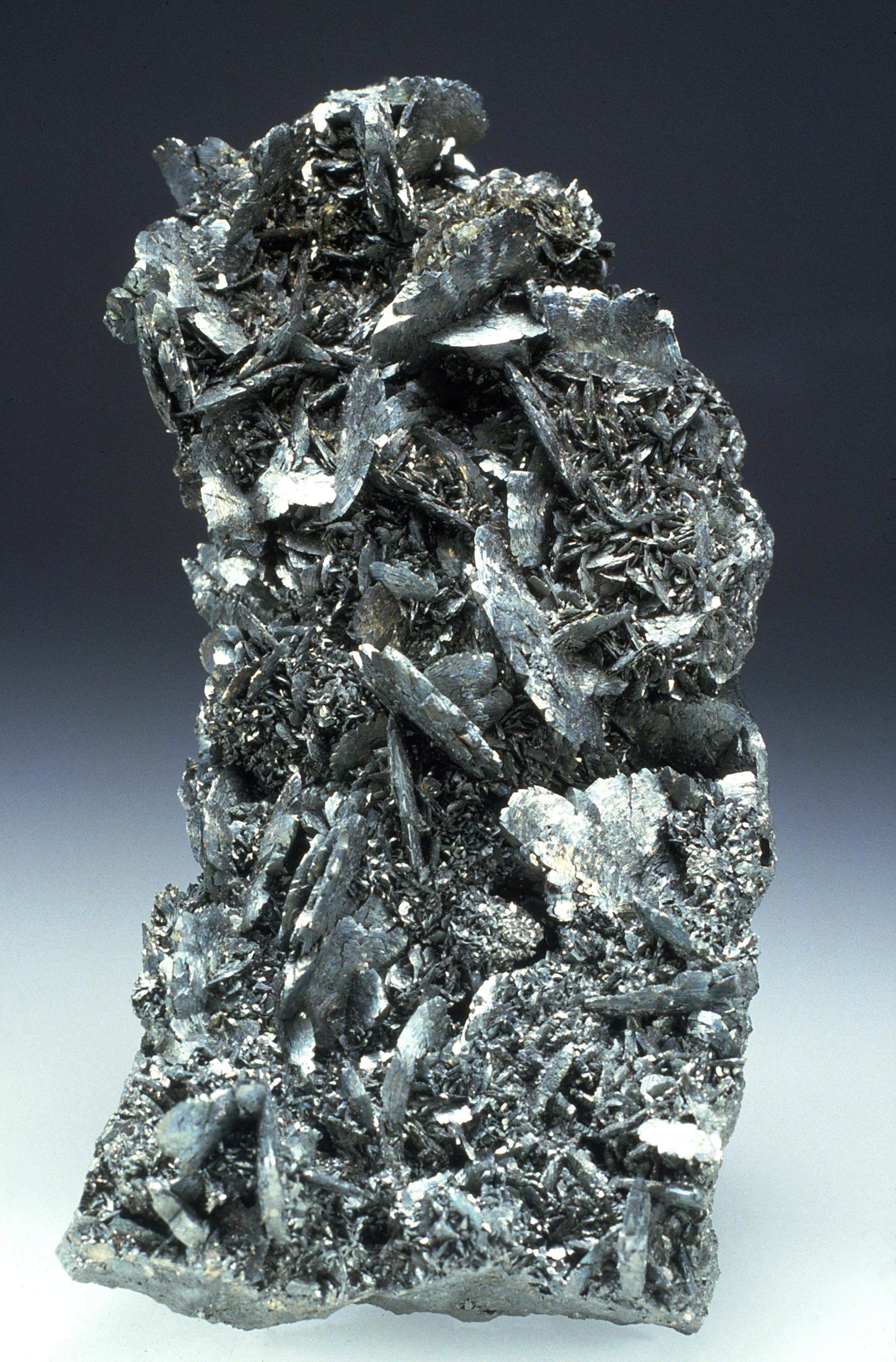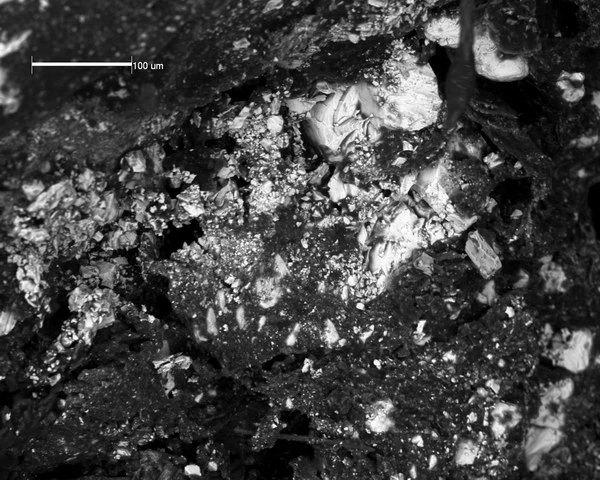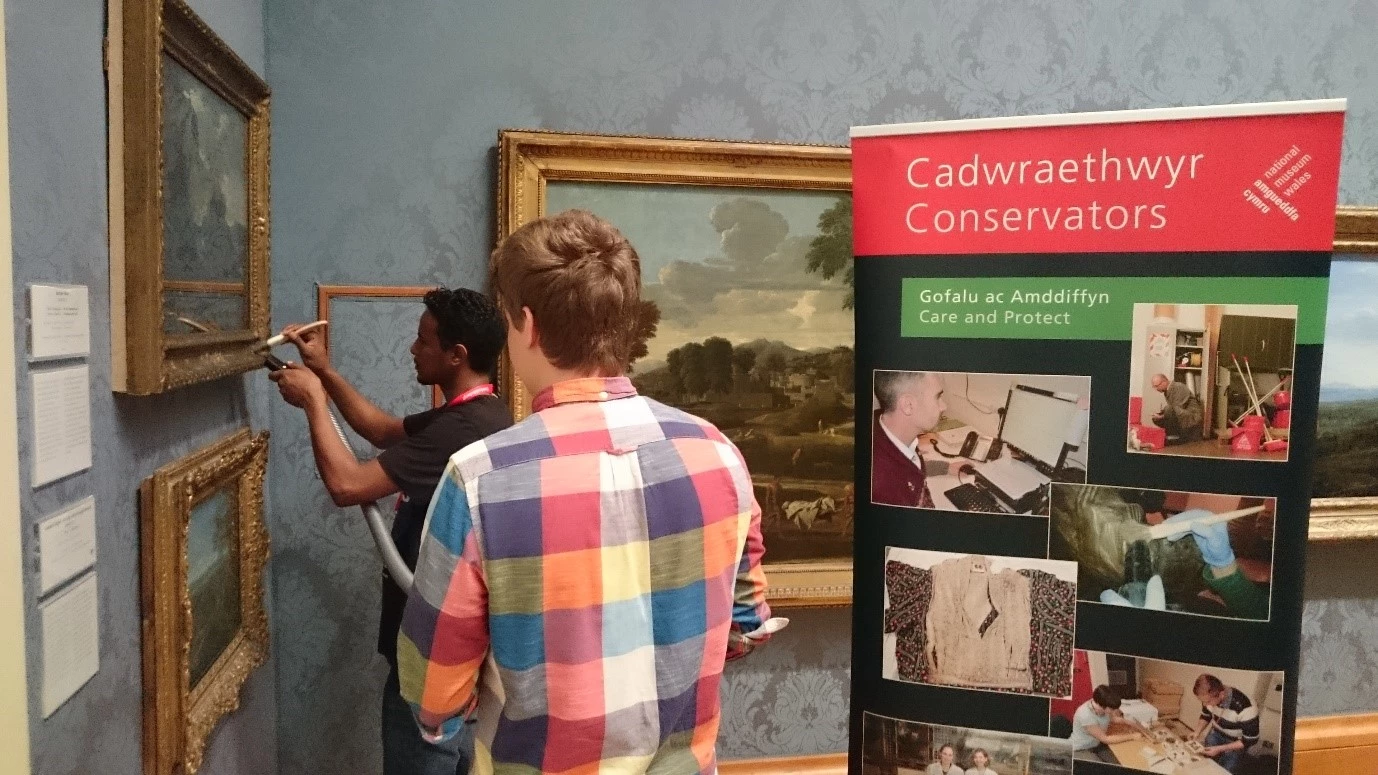Yn 2019 mae Tabl Cyfnodol yr Elfennau Cemegol yn 150 mlwydd oed (gweler UNESCO https://www.iypt2019.org/). Mae hyn yn gyfle i feddwl am wahanol agweddau’r tabl cyfnodol, gan gynnwys effeithiau cymdeithasol ac economaidd elfennau cemegol.
Sylffwr yw’r bumed elfen fwyaf cyffredin (yn ôl màs) ar y Ddaear, ac mae’n un o’r sylweddau cemegol gaiff ei ddefnyddio fwyaf. Ond mae sylffwr yn gyffredin tu hwnt i’r ddaear: mae gan Io – un o leuadau Galileaidd y blaned Iau – dros 400 o losgfynyddoedd byw sy’n lledaenu lafa llawn sylffwr, gymaint ohono nes bod arwyneb y lleuad yn felyn.
Alcemi
Câi halwynau sylffad haearn, copr ac alwminiwm eu galw’n “fitriol”, oedd yn ymddangos mewn rhestrau o fwynau a wnaed gan y Swmeriaid 4,000 o flynyddoedd yn ôl. Câi asid sylffwrig ei alw’n “olew fitriol”, term a fathwyd gan yr alcemydd Arabaidd Jabir ibn Hayyan yn yr 8fed ganrif. “Brwmstan” oedd yr hen enw am sylffwr yn llosgi, ac arweiniodd hyn at y gred fod Uffern yn arogli fel sylffwr.
Mwynoleg
Anaml iawn y gwelir sylffwr pur – mae fel arfer i’w ganfod fel mwynau sylffid a sylffad. Mae sylffwr elfennol i’w weld ger ffynhonnau poeth, daeardyllau hydrothermol ac mewn ardaloedd folcanig lle gellir ei fwyngloddio, ond prif ffynhonnell sylffwr ar gyfer diwydiant yw’r mwyn haearn sylffid, pyrit. Ymysg mwynau sylffwr pwysig eraill mae sinabar (mercwri sylffid), galena (plwm sylffid), sffalerit (sinc sylffid), stibnit (antimoni sylffid), gypswm (calsiwm sylffad), alwnit (potasiwm alwminiwm sylffad), a barit (bariwm sylffad). O ganlyniad, mae’r cofnod Mindat (cronfa ddata wych ar gyfer mwynau) ar gyfer sylffwr yn un go hir: https://www.mindat.org/min-3826.html.
Cemeg
Mae sylffwr yn un o gyfansoddion sylfaenol asid sylffwrig, gaiff ei alw’n ‘Frenin y Cemegau’ oherwydd ei fod mor ddefnyddiol fel deunydd crai neu gyfrwng prosesu. Asid sylffwrig yw’r cemegyn gaiff ei ddefnyddio amlaf yn y byd, ac mae’n ddefnyddiol yn bron bob diwydiant; gan gynnwys puro olew crai ac fel electrolyt mewn batris asid plwm. Caiff dros 230 miliwn tunnell o asid sylffwrig ei gynhyrchu bob blwyddyn dros y byd.
Rhyfel
Powdr gwn, cymysgedd o sylffwr, siarcol a photasiwm nitrad a ddyfeisiwyd yn Tsieina yn y 9fed ganrif, yw’r ffrwydryn cynharaf y gwyddom amdano. Sylwodd peirianwyr milwrol Tsieina ar botensial amlwg powdr gwn, ac erbyn OC 904 roeddent yn taflu lympiau o bowdr gwn ar dân gyda chatapyltiau yn ystod gwarchae. Mewn rhyfel cemegol 2,400 o flynyddoedd yn ôl, defnyddiodd y Spartiaid fwg sylffwr yn erbyn milwyr y gelyn. Mae sylffwr yn un o gyfansoddion pwysig nwy mwstard, sydd wedi bod yn cael ei ddefnyddio fel arf cemegol ers y Rhyfel Byd Cyntaf.
Fferylliaeth
Mae gan gyfansoddion sylffwrig bob math o ddefnydd therapiwtig, gan gynnwys trin microbau, llid, feirysau, clefyd siwgr, malaria, canser a chyflyrau eraill. Mae llawer o gyffuriau yn cynnwys sylffwr. Ymysg yr enghreifftiau cynnar mae sylffonamidau, “cyffuriau sylffa”. Mae sylffwr yn rhan o sawl gwrthfiotig, gan gynnwys penisilin, ceffalosborin a monolactam.
Bywydeg
Mae sylffwr yn un o elfennau hanfodol bywyd. Mae rhai asidau amino (cystein a methionin; asidau amino yw cyfansoddion strwythurol protein) a fitaminau (biotin a thiamin) yn gyfansoddion organosylffwr. Mae deusylffidau (bondiau sylffwr-sylffwr) yn rhoi cryfder mecanyddol ac anhydoddedd i’r protein ceratin (sydd mewn croen, gwallt a phlu). Mae gan lawer o gyfansoddion sylffwr arogl cryf: mae arogl grawnffrwyth a garlleg yn dod o’r cyfansoddion organosylffwr. Nwy hydrogen sylffid sy’n rhoi arogl cryf i wyau drwg.
Ffermio
Mae sylffwr yn un o’r prif faetholion ar gyfer tyfu cnydau. Mae sylffwr yn bwysig gydag ymlifiad maetholion, cynhyrchu cloroffyl a datblygiad hadau. Oherwydd hyn, mae asid sylffwrig yn cael ei ddefnyddio’n helaeth fel gwrtaith. Mae tua 60% o’r pyrit gaiff ei fwyngloddio yn cael ei ddefnyddio i gynhyrchu gwrtaith – gallech ddweud mai pyrit sy’n bwydo’r byd.
Yr Amgylchedd
Mae anfanteision i ddefnyddio sylffwr: mae llosgi glo ac olew yn creu sylffwr deuocsid, sy’n adweithio gyda dŵr yn yr atmosffer i greu asid sylffwrig, un o brif achosion glaw asid, sy’n troi llynnoedd a phridd yn asidig ac yn difrodi adeiladau. Mae draeniad asidig o fwyngloddiau, un o ganlyniadau ocsideiddio pyrit wrth fwyngloddio, yn broblem amgylcheddol fawr, ac yn lladd llawer o fywyd mewn afonydd ledled y byd. Yn ddiweddar, defnyddiwyd carreg galchaidd yn cynnwys llawer o pyrit fel ôl-lenwad ar gyfer stadau tai o gwmpas Dulyn. Achosodd hyn ddifrod i lawer o dai wrth i’r pyrit ocsideiddio. Cafodd yr achos ei ddatrys gan y “Pyrite Resolution Act 2013” a roddodd iawndal i berchnogion tai.
Cadwraeth Sbesimenau Amgueddfa
Oherwydd bod sylffidau haearn yn fwynau hynod adweithiol, mae’n anodd eu cadw mewn casgliadau amgueddfeydd. Am ein bod ni’n gofalu am ein casgliadau, sy’n cynnwys gwella arferion cadwraeth o hyd, rydym wastad yn chwilio am ffyrdd newydd o warchod mwynau bregus. Mae ein project diweddaraf, ar y cyd â Phrifysgol Rhydychen, yn cael ei gynnal gan ein myfyriwr ymchwil doethurol, Kathryn Royce. https://www.geog.ox.ac.uk/graduate/research/kroyce.html.
Dewch i’n gweld ni!
Os yw hyn wedi codi awydd arnoch i ddysgu mwy, dewch i weld ein sbesimenau sylffwr a pyrit yn Amgueddfa Genedlaethol Caerdydd. amgueddfa.cymru/caerdydd, neu gallwch ddysgu am fwyngloddio a diwydiannau tebyg yn Big Pit Amgueddfa Lofaol Cymru https://amgueddfa.cymru/bigpit/ ac Amgueddfa Lechi Cymru https://amgueddfa.cymru/llechi/.



